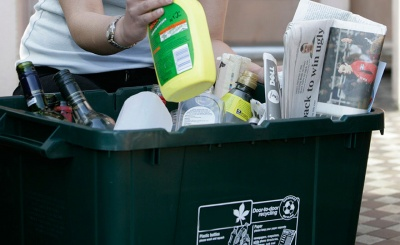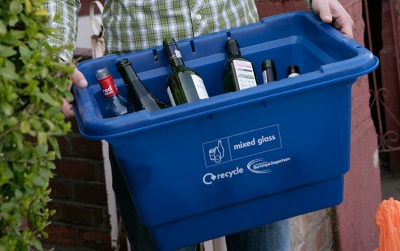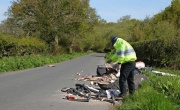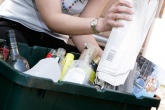New Recycling Guidelines give definitive answers on what can, and can’t, be recycled
A new set of guidelines on recycling is hoping to clear up once and for all what materials can and can’t be recycled at the kerbside, and what you need to do to them, in an attempt to remove the confusion keeping many members of the public back from fulfilling their recycling potential.
The National Recycling Guidelines, published today (12 October), have been developed by the whole chain of the recycling process – local authorities, waste management companies and recyclers – to provide a consistent and authoritative message on materials and help councils and the wider industry communicate with residents more effectively.
A number of surveys carried out in the past year have suggested that a lack of knowledge is a key barrier to better recycling in the UK, where the recycling rate has stalled in the last three years.
 One of those surveys, WRAP’s 2016 Recycling Tracker, found that two-thirds of UK households were unsure of how to correctly dispose of at least one item and just under half (49 per cent) admitted that they regularly put at least one item in their bin when they know it is collected for recycling in their area.
One of those surveys, WRAP’s 2016 Recycling Tracker, found that two-thirds of UK households were unsure of how to correctly dispose of at least one item and just under half (49 per cent) admitted that they regularly put at least one item in their bin when they know it is collected for recycling in their area.
The new set of guidelines covers the main materials collected at the kerbside: paper, card, cartons, metal, plastic and glass packaging, and food waste.
For each material, residents will be told what items can be included with collections and which can’t, how they should be presented (i.e. whether they need to be rinsed and whether lids can be left on or not) and explain why certain items can’t be taken.
Guidelines aim to alleviate resident ‘frustration’
Last month a survey published by waste management firm Viridor found that 66 per cent of people are ‘frustrated about not having enough educational materials on recycling’ and that around the same proportion (64 per cent) feel they don’t know enough about how to recycle certain items, which seem to fit in with materials accepted for collection, like light bulbs, crisp packets, coffee cups and plastic wrapping.
The Waste & Resources Action Programme (WRAP), which led the work developing the guidelines, hopes that they will reduce confusion amongst householders across Great Britain and push up the recycling rate by ensuring that all that can be recycled is collected.
Linda Crichton, Head of Resource Management at WRAP, said: “For as long as I have been at WRAP there has been a desire to have clarity across the country on what can be recycled and how items should be presented for recycling. We now have that – labels and tops can be left on bottles, envelopes can be recycled, trigger sprays don’t need to be removed!”
The guidelines will be embedded in resources used by WRAP’s Recycle Now campaign, with new communications materials being made available to local authorities and other partners to download and localise. WRAP also says that the key information and messages included can be incorporated in targeted and strategic communications to help ‘increase recycling, reduce contamination, and ultimately realise savings across the whole supply chain’.
“We encourage all organisations to consider the guidelines and adopt the information and messages that are relevant to them,” Crichton continued. “WRAP will keep the guidelines under review and incorporate additional materials and advice as practices and technology develops.”
Low-cost intervention with potential for strong positive impact
The release of the guidelines, which have been in development for over a year, closely follows September’s publication of the ‘Framework for Greater Consistency in Household Recycling for England’, which, if adopted, would see every home in England able to recycle the same set of core materials by 2025 using a more regular set of council collection systems.

Commenting on the what impact the new guidelines could have, Ray Georgeson, Chief Executive of the Resource Association, one of the organisations to develop the guidelines, said: “[The guidelines] are a necessary next step in the journey towards greater consistency in household recycling collections and in the essential task of improving the quality of recyclate by reducing contamination.
“The publication of these guidelines is timely, in that the continuing stress that contamination in recyclate places upon UK reprocessors has not diminished in recent times. Their adoption would be a low-cost intervention with the potential for a strong positive impact, particularly if they were to be combined with another low-cost intervention around improving the transparency to the public of what actually happens to recycling and its end destination [another desire of UK residents found by a Resource Association study this summer].
“Together these two low-cost activities could give English recycling the lift it needs towards the continuing challenge of reaching the 50 per cent recycling target.”
Giving the public the consistent messages they want
Through the development of the guidelines, which included the consultation of 11 companies and trade associations, it was found that often residents are given too much information to consume at one time. WRAP says that local authorities should therefore use the ‘extensive’ guidelines’ for targeted communications that focus on material of low capture and those that are most commonly included with recycling incorrectly.
Lee Marshall, CEO of the Local Authority Recycling Advisory Committee (LARAC) said: “The fact that local authorities and reprocessors were able to work constructively to produce these guidelines shows the way forward for increasing recycling levels in the UK. Without a willingness to engage local authorities this couldn’t have happened and we now encourage local authorities to use these guidelines to enhance their communications and give the public the consistent messages they say they want.”
More information on the National Recycling Guidelines can be found on the WRAP website.









